Contemporary Church History Quarterly
Volume 20, Number 1 (March 2014)
Memorial Speech: Dr. Margot Kaessmann on the 120th Anniversary of the Birth of Dr. Elisabeth Schmitz
By Margot Kaessmann
On 17 December 2013, the City of Berlin and the Evangelical Church in Berlin, Brandenburg and Silesian Upper Lusatia honoured the historian Dr. Elisabeth Schmitz with a prestigious memorial service on the occasion of the 120th anniversary of her birth. The memorial speech was given by the former Bishop of Hannover, Dr. Margot Kaessmann, who is currently representative of the Council of the EKD for the Reformation Jubilee of 2017. We are pleased to publish excerpts from her speech and thank Dr. John S. Conway for his translation of the text.
Margot Kaessmann: Memorial speech on Elisabeth Schmitz (1893-1977)
Elisabeth Schmitz was born on 23 August 1893. I am grateful that 120years later André Schmitz and Manfred Gailus have taken the initiative to honour her this evening in Berlin, and also that the present Bishop of Berlin-Brandenburg Markus Droege is here with us. She lived here in Berlin from 1915 to 1943, and from 1933 onwards she saw at close range how damaging the Nazi ideology truly was, which led her to recognize the dangers and to protest, quietly but unmistakably. It is now 75 years since the notorious Crystal Night pogrom in 1938, but Elisabeth Schmitz had already foreseen such disasters. As a result she felt obliged to resign her duties as a teacher, fearing that her integrity would be compromised.
Today’s commemoration must be seen as an exceptional event. This “protesting Protestant”, as Manfred Gailus calls her in his biography, has hardly been known, and much too little recognized. But as he says: “Protestantism in Germany in the 21st century will want to accord this woman a high place, and even sooner or later to put her in the category of Protestant saints.” Of course Protestants have a problem with saints, since they believe that only God deserves to be worshipped, not men or women. For people in the Reformation tradition, the communion of saints is reserved for those whose life and death was totally committed to God, as is recognized in Article 21 of the Augsburg Confession of 1530.
…
But Manfred Gailus is quite right to assert that we can learn from the example set by Elisabeth Schmitz’ faithful witness and her self-sacrificing commitment to others. It is high time that we acknowledge what she achieved. When people talk about the Resistance Movement in the Third Reich, we all know about such names as Dietrich Bonhoeffer, Alfred Delp, or Hans von Dohnanyi. But women’s names are mentioned only as supportive wives. But of course there were women active in this resistance, and not only in the “White Rose” circle, such as Sophie Scholl, or in the Red Chapel network. One of them was Elisabeth Schmitz. She was originally from Hanau, but worked here in Berlin, but finally went back to Hanau where she died at the age of 84 in 1977. Only seven people attended her funeral.
Why are we commemorating her now? One of her pupils was Dietgard Meyer, who later became a pastor in Hessen. I myself was ordained in 1985 in Hessen and so learnt to know Dietgard Meyer. She told me about Dr. Katharina Staritz, who was provisionally ordained in Breslau as a “city vicar” in 1938, and who was arrested because of her engagement in the resistance, but whose status was not recognized after the war. Only in the last few years did I learn about Elisabeth Schmitz, but I was quickly appreciative of her early and clear recognition of the unbearable violations of human dignity and rights by the Nazis. From Manfred Gailus’ biography I learnt how well established Elisabeth Schmitz was in her circle of well-educated women, such as Dr. Carola Barth, who taught religion, and also Dr. Elisabet von Harnack, or particularly later with Dr. Martha Kassel, a medical doctor, who was a Protestant of Jewish origin. She had good contacts with Professor Elisabeth Schiemann, and also with such colleagues as Dr. Elisabeth Abegg and Margarete Behrens. These were among the first generation of women to be particularly well educated, and took advantage of this fact to express their views with vigor. This gave them a capacity for a critical approach to affairs, and their freedom and independence therefore made them skeptical towards the allurements of the National Socialist ideology.
Already in 1933 Elisabeth Schmitz had expressed her outrage about the injustice and cruelties inflicted upon those of Jewish origin. This was a time when many in the church thought that matters would improve after the Nazis took power. But Elisabeth Schmitz was more sanguine. As Gailus noted: “She was deeply involved and offended by the daily humiliations inflicted on her ‘non-aryan’ friends Martha Kassel, and her brother the lawyer Heinrich Kassel, as well as on other friends and acquaintances. She was also influenced by belonging to a circle of Jewish intellectuals around Julius Bab, by her reading of the writings of Karl Barth and by her extended correspondence with this Swiss theologian from April 1933 onwards.” These were the factors which affected her after that date, and brought her to join the circle led by Pastor Gerhard Jacobi in the Kaiser Wilhelm Memorial parish. In 1934 she took the step of signing the “Red Card” indicating her willingness to join the Confessing Church group in this parish.
In 1935 already she wrote a memorandum urging her church to stand up against the discrimination being inflicted on the Jews. She wrote: “For the past two and a half years a severe persecution has been inflicted on a portion of our people because of their racial origin, including a portion of our own parish membership. The victims of this persecution have suffered dreadful distress both outwardly and inwardly but this is not widely known, which makes the guilt of the German people all the more reprehensible.”
Elisabeth Schmitz had studied history, German, and theology in order to teach in a secondary high school. She graduated in 1920 as a pupil of Friedrich Meinecke in Berlin, which was an unusual achievement for a woman at that time. She was then granted her teaching certificate, and from April 1929 she was promoted to be a senior teacher in the Berlin school system. One of her pupils described her as being “quietly reserved, concentrating on the lesson materials, but both positive and demanding in her requirements from us. Her dress was very modest, her hair parted in the middle and held up with a comb. All of which gave her a slightly old-fashioned look, which didn’t inspire us. Nevertheless she succeeded in gaining our respect. Her quiet authority made us speechless.”
These pupils didn’t know anything about what she did outside the school. But in fact she was a member of Helmut Gollwitzer’s “Dogmatic Study Circle.” Between 1933 and 1936 she conducted an extensive correspondence with Karl Barth in the hopes of getting him to adopt a public stance on the subject of the situation of the Jews in Germany. In these early years she received two answers. From her standpoint, this persecution of the Jews and the silence of the Church in response was a vital matter, but Barth at that time regarded this only as a side-issue. This seems to me to denote a vital difference among the active members of the Confessing Church who were trying to live out their Christian convictions. Was this really an issue about the true nature of the Church? Or was it merely a matter of standing up for the rights of the persecuted Jews? Or was the Church failing in its most essential obligation when it did not oppose vehemently enough the oppression, the betrayal of values, and the disrespect for human beings?
I was particularly struck by finding a very similar protest being made by Edith Stein, who was a Catholic convert from Judaism, writing to Pope Pius XI in April 1933. But she, like Elisabeth Schmitz, got no answer. But Schmitz carried on her commitment by writing an extensive memorandum about the situation of the Jews in Nazi Germany, and presenting this to the Synod of the Confessing Church which was held in Berlin in September 1935. But she got no reply. It is still not clear just who actually received this document. It would seem that its contents were talked about, but that it was never officially presented to the synod.
An interesting fact is that for a long while the authorship of this document was ascribed not to Elisabeth Schmitz, but to another member of the Confessing Church, Marga Meusel. Not until 1999 was Elisabeth Schmitz’ authorship recognized, and then only by chance when a large number of documents were discovered left behind in Hanau after her death. But the question still remains: why did she herself not take more trouble to have its contents better known even after the Nazi regime was overthrown?
This memorandum is an impressive document. Its author was an alert observer of the damages inflicted by the Nazi regime. For example, in describing the fate of children, she wrote: “Children ought to have the first claim on our sympathy. But now? In many large cities, Jewish children are sent to Jewish schools. Or their parents send them to Catholic schools, since in their view they will be better protected than in Protestant schools. And what about the converted Protestant children? And what happens to Jewish children in smaller communities where there is no Jewish school, or in the countryside? In at least one small town I have heard that the exercise books of Jewish children are torn up, and that their breakfast snacks are thrown in the gutter. Christian children are doing this, while Christian parents, teachers and pastors allow this to happen.” And to think that all this was written three years before Crystal Night!
Why did this protest fail to gain any support? Was it because the Confessing Church was more concerned about safeguarding its own existence than in saving the Jews? Or was it because the author was a woman and not a properly ordained pastor?
Elisabeth Schmitz was denounced because she had given hospitality to Martha Kassel, a Christian of Jewish origin. From 1935 on, she had increasing problems at her Lankwitz school because she couldn’t agree to “educate the children in the spirit of National Socialism”. So after the Crystal Night she asked to be allowed to retire. She was evacuated from Berlin in 1943 and returned to her parents’ home in Hanau. But from 1946 to 1958, she was once again teaching as before. She evidently had close contacts with her friends and former students, but never raised the subject of her memorandum.
I am concerned about this story. For one thing, it shows how early the injustices of Nazi policy were recognized. Everyone could have known what was happening. Look at the questions she posed so frankly in 1935: “Why do the ‘non-aryan’ Christians feel so deserted by the Church both locally and at the international level? Why does the Church do nothing? Why do they allow these palpable injustices to be perpetrated?”
Of course this raises the question about the nature of the Church. For her, it wasn’t just a question of the Church’s freedom to witness, as Karl Barth assumed, or about the fate of the baptized Jews, which so concerned Marga Meusel. She was much more concerned about the fate of the Church as Church if it was not prepared to stand up for the rights of those being maltreated. This was happening in front of these churchmen’s own eyes, or even with their participation. On the other hand, it is unforgivable that this memorandum was not honored after 1945. The church leaders were surely guilty of a collective amnesia, when only a few heroes were selected to be remembered, but their own failures were pushed out of sight and forgotten.
…
But today we should really celebrate Elisabeth Schmitz and be thankful for her stalwart witness. And we should be encouraged to follow her example in the life of our churches today. Her story is one which needs to be resurrected from the archives and kept alive in the day-to-day practice of our community. In this way Elisabeth Schmitz can truly be described as a Protestant saint, whose life and witness will remain of vital importance for us today and for the future.

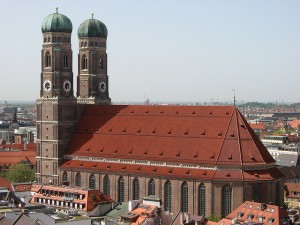
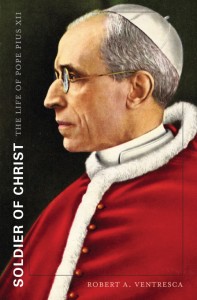 Born into the “black nobility” of Roman society, Pacelli lived a privileged life that even included a rare dispensation that enabled him to avoid the rigors of seminary life for the flexibility of home with his family. Pacelli was also not ordained with his classmates, but during a separate Mass in a private chapel. Despite such an uncommon priestly formation, Ventresca concludes that amid the changes “brought about by the fall of papal Rome in 1870, it is difficult to say whether there was anything typical about Pacelli’s clerical training in the closing decades of the nineteenth century” (p. 36). Yet, Ventresca reveals that Pacelli was exceptional. Even prior to earning a doctorate in canon law in 1904, Pacelli caught the attention of Pietro Gasparri, the secretary of the Sacred Congregation for Extraordinary Ecclesiastical Affairs, who soon became a patron and ensured a smooth transition for the young priest into Vatican bureaucracy. By 1914, the talented Pacelli had replaced Gasparri when the latter rose to become secretary of state. Three years later, Pacelli himself rose in the ranks to become papal nuncio to Bavaria. Prior to his departure for Germany, Pacelli was consecrated archbishop of Sardis by Pope Benedict XV himself.
Born into the “black nobility” of Roman society, Pacelli lived a privileged life that even included a rare dispensation that enabled him to avoid the rigors of seminary life for the flexibility of home with his family. Pacelli was also not ordained with his classmates, but during a separate Mass in a private chapel. Despite such an uncommon priestly formation, Ventresca concludes that amid the changes “brought about by the fall of papal Rome in 1870, it is difficult to say whether there was anything typical about Pacelli’s clerical training in the closing decades of the nineteenth century” (p. 36). Yet, Ventresca reveals that Pacelli was exceptional. Even prior to earning a doctorate in canon law in 1904, Pacelli caught the attention of Pietro Gasparri, the secretary of the Sacred Congregation for Extraordinary Ecclesiastical Affairs, who soon became a patron and ensured a smooth transition for the young priest into Vatican bureaucracy. By 1914, the talented Pacelli had replaced Gasparri when the latter rose to become secretary of state. Three years later, Pacelli himself rose in the ranks to become papal nuncio to Bavaria. Prior to his departure for Germany, Pacelli was consecrated archbishop of Sardis by Pope Benedict XV himself.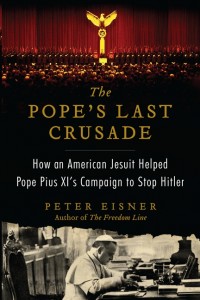 Briefly the story is as follows. Pope Pius XI (Achille Ratti) who reigned from 1922 to 1939 was increasingly alarmed and dismayed by the rise of Nazism and its flagrant and sustained attacks against both the Catholic Church and the Jews. Already in 1937, Pope Pius, after consulting the German bishops, had issued a vigorous protest in the Encyclical “Mit Brennennder Sorge”. But the results were disappointing. Hitler merely stepped up his persecution of the church, and encouraged his associates to be even more virulent in their campaigning against the Jews. But by 1938 the Pope had determined to protest again, specifically against the violent extremism in the Nazis’ racial and anti-Semitic ideology. By chance the Pope had come across a book written by LaFarge entitled Interracial Justice, which described the plight of blacks in the United States, and pleaded for the church to take a lead in combatting racism in that country. The parallels between racism in America and the dangers of anti-Semitism in Europe were easy to see.
Briefly the story is as follows. Pope Pius XI (Achille Ratti) who reigned from 1922 to 1939 was increasingly alarmed and dismayed by the rise of Nazism and its flagrant and sustained attacks against both the Catholic Church and the Jews. Already in 1937, Pope Pius, after consulting the German bishops, had issued a vigorous protest in the Encyclical “Mit Brennennder Sorge”. But the results were disappointing. Hitler merely stepped up his persecution of the church, and encouraged his associates to be even more virulent in their campaigning against the Jews. But by 1938 the Pope had determined to protest again, specifically against the violent extremism in the Nazis’ racial and anti-Semitic ideology. By chance the Pope had come across a book written by LaFarge entitled Interracial Justice, which described the plight of blacks in the United States, and pleaded for the church to take a lead in combatting racism in that country. The parallels between racism in America and the dangers of anti-Semitism in Europe were easy to see.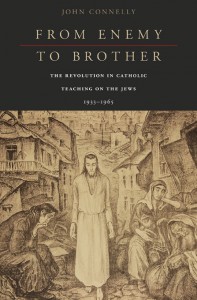
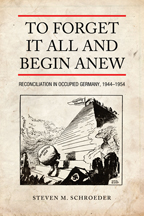 Unlike most of the studies of postwar Germany that focus on the origins of the Cold War and high stakes political maneuvering of the Allies, Schroeder takes a bottom-up approach that illuminates the less conspicuous reconciliation work of German groups such as the Association of the Victim of Nazism (VVN) and religiously-affiliated international groups such as International Fellowship of Reconciliation (IFOR), Moral Re-Armament (MRA), Pax Chrisiti, the International Council of Christians and Jews (ICCJ), and the World Council of Churches (WCC). His study compares and contrasts reconciliation, defined as “the establishment of peaceful – or at least non-hostile – relations between former enemies” in the four zones of occupation in the immediate postwar years and in East and West Germany after 1949.
Unlike most of the studies of postwar Germany that focus on the origins of the Cold War and high stakes political maneuvering of the Allies, Schroeder takes a bottom-up approach that illuminates the less conspicuous reconciliation work of German groups such as the Association of the Victim of Nazism (VVN) and religiously-affiliated international groups such as International Fellowship of Reconciliation (IFOR), Moral Re-Armament (MRA), Pax Chrisiti, the International Council of Christians and Jews (ICCJ), and the World Council of Churches (WCC). His study compares and contrasts reconciliation, defined as “the establishment of peaceful – or at least non-hostile – relations between former enemies” in the four zones of occupation in the immediate postwar years and in East and West Germany after 1949.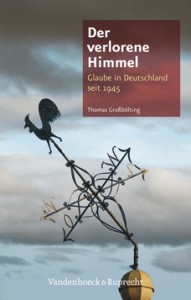 Thomas Grossbölting, who teaches at the University of Münster, poses these questions and puts them in the context of faith, church and religion after the catastrophe of National Socialism in Germany. This well researched study can be seen as the first up-to-date history of religion in the Federal Republic of Germany. His basic thesis is clear and hardly surprising. Anyone examining how and what Germans have believed in the past fifty years has to take note of a striking decline in the significance of religious consciousness. Although, in recent years, some observers have claimed that there has been a so-called religious revival, in fact anyone taking a longer view over the past five or six decades must conclude that a far-reaching secularization has taken place. The very idea of Heaven has been lost. As the author crucially points out in his introduction: “A Christian Germany no longer exists”. On the other hand, the elements of faith, church and religion have not disappeared from daily life in Germany. Rather they have been thinned out, pushed to the edge of society, and in many people’s lives they are completely or largely absent.
Thomas Grossbölting, who teaches at the University of Münster, poses these questions and puts them in the context of faith, church and religion after the catastrophe of National Socialism in Germany. This well researched study can be seen as the first up-to-date history of religion in the Federal Republic of Germany. His basic thesis is clear and hardly surprising. Anyone examining how and what Germans have believed in the past fifty years has to take note of a striking decline in the significance of religious consciousness. Although, in recent years, some observers have claimed that there has been a so-called religious revival, in fact anyone taking a longer view over the past five or six decades must conclude that a far-reaching secularization has taken place. The very idea of Heaven has been lost. As the author crucially points out in his introduction: “A Christian Germany no longer exists”. On the other hand, the elements of faith, church and religion have not disappeared from daily life in Germany. Rather they have been thinned out, pushed to the edge of society, and in many people’s lives they are completely or largely absent.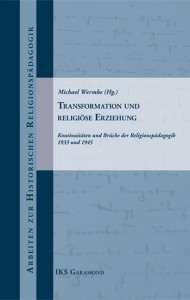 Two of the chapters are biographical studies of individual religious educators or professors at teacher training institutions. Thomas Martin Schneider’s “Die Umbrüche 1933 und 1945 und die Religionspädagogik” takes up the story of Georg Maus, a religion teacher at an Oberschule in Idar- Oberstein. Maus, who was associated with the Confessing Church, was accused of undermining the war effort because he failed to properly manage a class discussion of Jesus’ command to love one’s enemies. He received a two-year sentence and died while being transported to Dachau. Schneider contrasts Maus’ story with that of Reinhold Krause, also an educator, but most famous for his address to members of the German Christian Movement at the Berlin Sport Palace Rally in 1933. Schneider finds that Krause both appropriated and violated aspects of liberal Protestant thought. The cases of Maus and Krause, Schneider argues, call into question both the “conservative decadence model” that blames liberal Protestant theology for Nazi conceptions of Christianity and the “progress- optimistic model” that exonerates it of all charges. Theological orientations, including diverse political theologies in the twentieth century, cannot be judged apart from their historical contexts. Likewise, one should not reduce contemporary religious education to the narrow range of options that were present in the Third Reich, nor should one assume that those options will have the same value in all historical settings.
Two of the chapters are biographical studies of individual religious educators or professors at teacher training institutions. Thomas Martin Schneider’s “Die Umbrüche 1933 und 1945 und die Religionspädagogik” takes up the story of Georg Maus, a religion teacher at an Oberschule in Idar- Oberstein. Maus, who was associated with the Confessing Church, was accused of undermining the war effort because he failed to properly manage a class discussion of Jesus’ command to love one’s enemies. He received a two-year sentence and died while being transported to Dachau. Schneider contrasts Maus’ story with that of Reinhold Krause, also an educator, but most famous for his address to members of the German Christian Movement at the Berlin Sport Palace Rally in 1933. Schneider finds that Krause both appropriated and violated aspects of liberal Protestant thought. The cases of Maus and Krause, Schneider argues, call into question both the “conservative decadence model” that blames liberal Protestant theology for Nazi conceptions of Christianity and the “progress- optimistic model” that exonerates it of all charges. Theological orientations, including diverse political theologies in the twentieth century, cannot be judged apart from their historical contexts. Likewise, one should not reduce contemporary religious education to the narrow range of options that were present in the Third Reich, nor should one assume that those options will have the same value in all historical settings.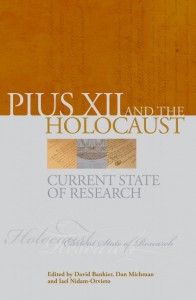 The workshop was a further attempt to mend frayed relations. Yad Vashem and the Reverend Roberto Spataro (acting “on behalf of the Nuncio”) each chose five scholars for the workshop. The latter: Andrea Tornielli, Matteo Napolitano, Grazia Loparco, Jean-Dominique Durand, and Thomas Brechenmacher; the former: Paul O’Shea, Michael Phayer, Susan Zuccotti, Sergio Minerbi, and Dina Porat. Summing up at the end, the Reverend Spataro commented: “we met in an atmosphere of confidence, trust and mutual respect.”
The workshop was a further attempt to mend frayed relations. Yad Vashem and the Reverend Roberto Spataro (acting “on behalf of the Nuncio”) each chose five scholars for the workshop. The latter: Andrea Tornielli, Matteo Napolitano, Grazia Loparco, Jean-Dominique Durand, and Thomas Brechenmacher; the former: Paul O’Shea, Michael Phayer, Susan Zuccotti, Sergio Minerbi, and Dina Porat. Summing up at the end, the Reverend Spataro commented: “we met in an atmosphere of confidence, trust and mutual respect.”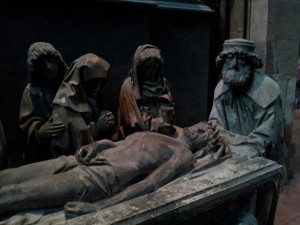
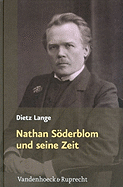 A new biography has recently been published in Germany of Nathan Söderblom, the most prominent Protestant church leader in the decade of the 1920s. The author, Dietz Lange, is the emeritus professor of Systematic Theology in Göttingen, and in this laudatory but leisurely account of Söderblom’s career, the emphasis is placed on the evolution of Söderblom’s intellectual ideas and his relations with other scholars and theologians of his time. Lange supplements but does not supplant the standard biography in English, written nearly half a century ago by Bengt Sundkler, which concentrated on Söderblom’s main claims to fame, his championships of the peace endeavours during the first world war, and his leadership of the ecumenical movement in the aftermath.
A new biography has recently been published in Germany of Nathan Söderblom, the most prominent Protestant church leader in the decade of the 1920s. The author, Dietz Lange, is the emeritus professor of Systematic Theology in Göttingen, and in this laudatory but leisurely account of Söderblom’s career, the emphasis is placed on the evolution of Söderblom’s intellectual ideas and his relations with other scholars and theologians of his time. Lange supplements but does not supplant the standard biography in English, written nearly half a century ago by Bengt Sundkler, which concentrated on Söderblom’s main claims to fame, his championships of the peace endeavours during the first world war, and his leadership of the ecumenical movement in the aftermath.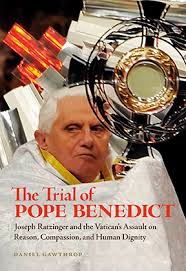 Writing with considerable journalistic flair, but of course without any Vatican official documentation, Gawthrop presents us with a highly critical account of Ratzinger’s career. To be sure, he allows that, during the Council’s sessions, Ratzinger, then a theological advisor to one of the German Cardinals, supported many of the reformist ideas. But only a few years later, while he was teaching at Germany’s most prestigious university of Tübingen, he was deeply offended by the virulent student radicalism embracing a “Marxist messianism”. As a result he turned away from his colleagues such as Hans Kung and other progressive theologians. Shortly afterwards he retreated to the rural backwater of Regensburg in his native Bavaria, and began to prepare his theological counter-offensive to Vatican II.
Writing with considerable journalistic flair, but of course without any Vatican official documentation, Gawthrop presents us with a highly critical account of Ratzinger’s career. To be sure, he allows that, during the Council’s sessions, Ratzinger, then a theological advisor to one of the German Cardinals, supported many of the reformist ideas. But only a few years later, while he was teaching at Germany’s most prestigious university of Tübingen, he was deeply offended by the virulent student radicalism embracing a “Marxist messianism”. As a result he turned away from his colleagues such as Hans Kung and other progressive theologians. Shortly afterwards he retreated to the rural backwater of Regensburg in his native Bavaria, and began to prepare his theological counter-offensive to Vatican II.